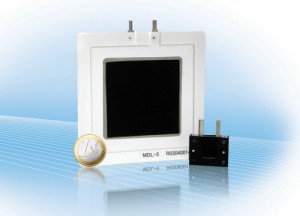The Wikipedia Free Encyclopedia website has a section on dehumidifiers and describes various techniques for reducing humidity. The ROSAHL dehumidifiers use the technique referred to in the section ionic membrane dehumidifier
Ionic membrane uses cover many industrial areas such as fuel cell technology, chemical engineering, and for water improvement. A specialized type of membrane used as an “ionic pump” to move humidity into or out of a sealed enclosure. Furthermore, they operate at a molecular level without involving visible liquid water.
The solid polymer electrolyte (SPE) membrane is a low power, steady state dehumidifier for enclosed areas where maintenance is difficult. The electrolytic process delivers dehumidifying capacities up to 0.2 grams/day from a 0.2m³ (7 cu ft) space to 58 grams/day from an 8m³ (280 cu ft). SPE systems generally do not have high dehumidification capacities.
Maintenance free ionic membrane
Because the water vapor removal is through electrolysis however, the process is maintenance free. The process also requires very little electrical energy to operate, using no moving parts, making the ionic membranes silent in operation and very reliable over long periods of time. SPE dehumidifiers will protect sensitive electrical components, medical equipment, museum specimens, or scientific apparatus from humid environments.
The SPE consists of a proton-conductive solid polymer electrolyte and porous electrodes with a catalytic layer composed of noble metal particles. It works by applying a low voltag to the porous electrode attached to the membrane. The moisture on the anode side (dehumidifying side) dissociates into hydrogen ions (H ) and oxygen. Finally, the hydrogen ions migrate through membrane for discharge on the cathode (moisture discharging) side where they react with oxygen in the air, resulting in the discharge of water molecules (gas).

